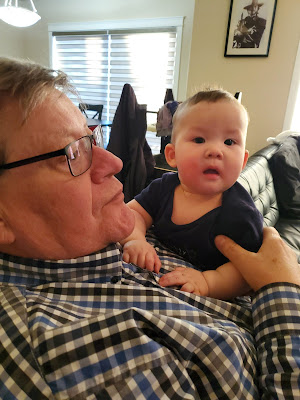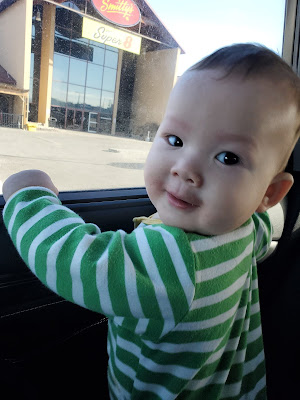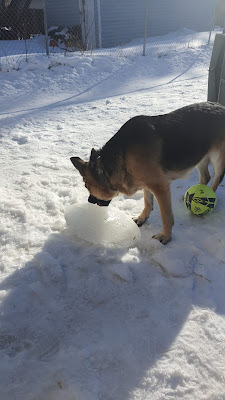April 4th was the 55th anniversary of the assassination of Dr. Martin Luther King Jr. I decided to do a blog post about it and ended up going down a very deep rabbit hole. I finally had to quit looking for material and go with what I had. It took me until today to sort and write. Getting the pertinent stuff in without writing a book was a challenge. This is my attempt.
Fifty-Five years ago, on April 4
th, 1968, Dr.
Martin Luther King Jr. was murdered on the balcony of the Lorraine Motel in
Memphis Tennessee. The official verdict was that it was done by a lone gunman.
James Earl Ray, a petty thief and escaped convict, who pleaded guilty and died
in prison. However, a great many things did not add up leaving the identity of
the actual assassin open for debate.
It takes a great deal of proof to convince me about many
official versions of controversial events. Too many official accounts cover up
or ignore crucial details. Top Secret is not to protect the nation but to cover
someone’s ass. It isn’t just Russia where people inconvenient to the powers are
eliminated. Journalist Michael Hastings died in a flaming
car wreck. JFK? I am convinced that events went down as the Warren
Commission described them and as confirmed by Philip Shenon’s book, “A
Cruel and Shocking Act”. The question is who put the idea in Oswald’s head
and made it stick? RFK? I’ll look at that closer to his assassination date.
Throughout the upheaval of the
1960s, the US government waged an all-out covert war against the black freedom movement. The FBI’s campaign of
illegal surveillance, harassment,
blackmailing, subversion, and violence—including the extrajudicial execution of Black Panther leader Fred
Hampton in Chicago in 1969—under the auspices of COINTELPRO is largely a matter
of historical record.
The FBI, in particular J. Edgar Hoover, hated MLK. After
King made his “I have a dream” speech in 1963, Hoover called him the “most dangerous and effective Negro leader in the
country.” The FBI kept him under constant
surveillance hoping to find Communist influence. They didn’t find any, but
they did learn about his philandering, which they used against him. They were
obsessed with neutralizing his influence in the civil rights movement, tracking
his flights, tapping his phone, and harassing him to the point of sending an anonymous
letter suggesting he commit suicide.
King made powerful enemies by opposing the war in Vietnam as
contractors were making too much money to want the war to stop. But what really
made him dangerous was The Poor People’s Campaign of 1968, which demanded that
the government address the employment and housing problems of the poor, both
Black and White, throughout the United States. The Idea that if King was able
to convince poor Blacks and Whites that they had enough in common to unite and
fight together for justice, terrified the establishment that survived by
pitting one against the other. King had to be stopped. Conveniently, a lone
deranged racist gunman, James Earl Ray, allegedly shot King at 6:01 pm on April 4th, 1968.
Ray’s first lawyer, Haines began digging into some of
the questionable assertions of the Memphis police. Ray was persuaded to change
lawyers. He pleaded guilty on the advice of his new lawyer, Percy Foreman, who
assured him he would get a retrial in two weeks. Foreman immediately
disappeared, leaving Ray $500 to hire another lawyer.
Consequently, the official investigations stopped, and no
trial was held. None of the evidence that might have cleared him and
incriminated the guilty party (parties) was ever made public. For the rest of
his life, Ray was unsuccessful in getting a new trial. All official government investigations,
thereafter, including one by the House Select Committee on Assassinations under
chief counsel Robert Blakey found Ray acted as the lone assassin.
However, in 2012, G. Robert
Blakey, who had been the staff director to the HSCA, admitted that he had been
misled by the CIA, which had failed to disclose that a government liaison to
the HSCA, George Joannides, had a CIA background. Blakey told the (Jackson,
Miss.) Clarion-Ledger that “reasonable people today, not just
conspiracy theorists, believe that more individuals than James Earl Ray were
involved in King’s assassination.”
Dr. William Pepper, lawyer, civil rights activist, and a
friend of Matin Luther King Jr., interviewed Ray in 1978 and was convinced of
his innocence. He spent almost 40 years tracking down witnesses and compiling
evidence that exonerated James Earl Ray and pointed to an evil conspiracy. His
third and final book “The
Plot to Kill King” published in 2016 is the culmination of his
investigations.
In 1999, Pepper and the King family launched a civil suit
against the Memphis restaurant owner, Lloyd Jowers, who claimed that he had
been paid by a local mobster to organize King’s assassination. He testified
that organizational meetings were held in his restaurant. The jury heard from
70 witnesses and took 59 minutes to decide that James Earl Ray was not the
person who murdered King. They ruled that local, state, and federal government
aided by members of the New Orleans Marcello crime family, were responsible.
Witnesses have testified to and/or evidence has been found
for all of the following:
- Clyde Tolson, longtime assistant to J Edgar Hoover and his
man in Memphis, delivered $25,000 cash via the mob, to the warden of the Missouri
prison where Ray was held. He was allowed to escape, made his way to Atlanta
and eventually to Montreal, where he met a man named Raul, a CIA operative who
became Ray’s handler.
- Raul involved Ray in some small gun running ventures. Ray
was sent to Birmingham for one such deal to buy a hunting rifle with a scope,
specifically a 30-06, after Ray initially bought a .243 calibre.
- Ray, at 3:00 pm on April 4th, on instructions
from Raul, booked a room on the second floor of Bessy’s Boarding House, a cheap
flophouse across the street from the Lorraine Motel on April 4th,
with a bar called Jim’s Grill, owned by Lloyd Jowers, on the street level. Ray
allegedly fired the shot from the window of the public bathroom on the second
floor.
- The distance from the bathroom window to the balcony was
about a 200-yard shot, easy for a skilled marksman but difficult for a novice.
Ray had never fired a rifle in his life. The rifle was not sighted in. The
bullet recovered from King’s body was never matched to the rifle and was in
fact cut up by the FBI.
- After shooting King, in the three minutes before the nearest
policeman arrived on foot, Ray allegedly took the rifle apart, put it in a briefcase,
threw it and a few belongings in a blanket and fled down the stairs and to his
car. On the way he dropped the blanket and rifle in front of the Canipe
Amusement Company, next door to the rooming house.
- Ray’s fingerprints were found on the rifle and a few other
things in the blanket but not in the room he rented at the flop house.
- Ray said he was told by Raul to leave the rifle and go
somewhere as there were things that needed to be done before the deal went down.
Ray was three blocks away when the shot was fired. As he drove back to the
boarding house, he saw all the activity and police cars and decided he had
better make a run for it.
- The fatal shot came from the bushes beside the rooming house,
possibly Memphis Police Lt. Earl Clark, a skilled marksman and associate of
Frank Liberto, a member of the Marcello crime family of New Orleans. Immediately
after the shot, a man was seen coming from the bushes into the street and
mingling with the crowd. Inexplicably, The bushes were cleared away the next
day by Memphis city workers.
- Jowers’ girlfriend said immediately after the shot, Jowers came
in the back door of Jim’s Grill with a rifle which he hid under the counter,
and which was picked up later, allegedly by Raul.
- The day of the shooting, the Memphis Police Department did
not provide the usual security for King and other security squads were kept
several blocks away. Orders allegedly came from Washington.
- The FBI immediately took control of the case though it was
clearly the jurisdiction of the Memphis Police. In
the years following his death, documents related to Martin
Luther King Jr.’s murder case were doctored
or destroyed, and all files of FBI surveillance on King were sealed for 50
years.
- After the shooting, Ray drove to Atlanta, then flew to
Europe, ending up in Portugal where he stayed until he ran out of money. He
went back to England where he was arrested in July 1968 and extradited to
America. Where did he get the money to stay on the run as long as he did?
- Ray used four aliases of real people who looked like him who
lived in Toronto. How did he get them?
- In 1995, new evidence had convinced Memphis criminal court Judge
Joe Brown to approve a new trial but before he could sign the papers he was
removed by the state.
- The son of Russel Adkins, member of the Dixie Mafia,
testified that meetings to organize the assassination took place in their house.
Participants included the Memphis Mayor and Chief of Police, and FBI agent Tolson.
- John McFerren, Black owner of a small grocery and gas
business, said he was in Frank Liberto’s warehouse buying produce for his store
when he overheard Liberto on the phone telling someone to shoot him when he is
on the balcony, go to New Orleans and get the rest of your money. . .”
These are just a few of the unanswered questions, testimony, statements, and evidence leading to the conclusion that James Earl Ray was not the assassin but was King's murder was carried out by parties unknown or unproveable.
By the late 60s there was an erosion of support for the civil rights movement. After King was killed, riots broke out in over 100 cities, as Blacks dealt with their feeling of loss and hopelessness. The majority of non-Blacks, instead of dealing with the issues that created the Black ghettos, believing that the protesters were merely bad people, determined simply to stop any further uprisings by any means possible. Thus Nixon and Ronald Reagan ran on 'law and order" leading to the mass incarceration of Blacks.
Investigation Points to FBI Conspiracy to Silence Martin
Luther King Jr.
https://www.theedgemedia.org/martin-luther-king-assassination/
The FBI’s secret memos show an agency obsessed with
‘neutraliz(ing)’ MLK
https://www.cnn.com/2014/11/14/us/fbi-and-mlk/index.html
Did the FBI Kill MLK?
https://compactmag.com/article/did-the-fbi-kill-mlk
Did The FBI Orchestrate MLK Jr's Assassination | The
Conspiracy Show | Documentary Central
https://youtu.be/fNNUYE4RinI
Investigator Gary Revel’s Probe into Martin Luther King
Assassination Leads to New Book & Movie
https://www.youtube.com/watch?v=g6WpUL5IQD4
MLK Plot | American Black Journal Clip
https://youtu.be/8zYXYRW2vVA
Who killed Martin Luther King Jr.? His family believes
James Earl Ray was framed.
https://www.washingtonpost.com/news/retropolis/wp/2018/03/30/who-killed-martin-luther-king-jr-his-family-believes-james-earl-ray-was-framed/
‘I Am a Man’: The ugly Memphis sanitation workers’ strike
that led to MLK’s assassination.
https://www.washingtonpost.com/news/retropolis/wp/2018/02/12/i-am-a-man-the-1968-memphis-sanitation-workers-strike-that-led-to-mlks-assassination/
William Pepper - The Execution of Martin Luther King
https://youtu.be/mWS1KPCmOrI
WHO KILLED MARTIN LUTHER KING ? JAMES EARL RAY ? THE FBI
? OR WAS IT A 'DEEP STATE' CONSPIRACY ?
https://youtu.be/NfsW8nptgeI
INSIDE STORY: WHO KILLED MARTIN LUTHER KING? (TV)
https://www.paleycenter.org/collection/item/?q=all&p=502&item=B:20618
The Week That Made Modern America
https://www.theatlantic.com/newsletters/archive/2023/04/the-week-that-made-modern-america/673658/









.jpg)
.jpg)
